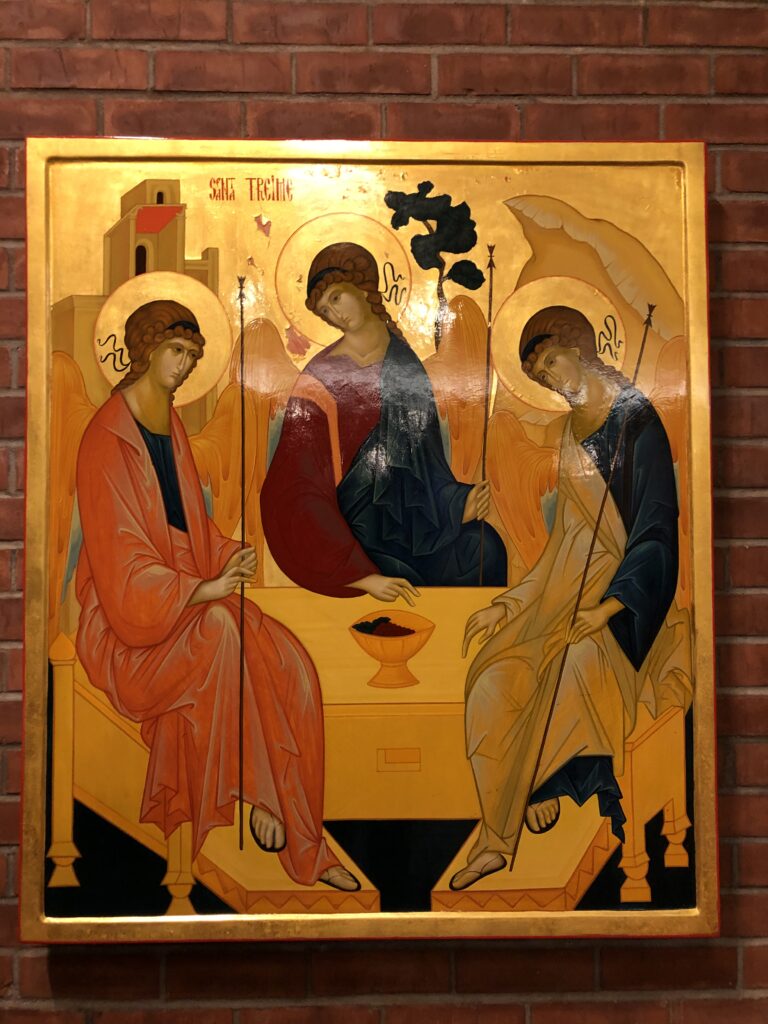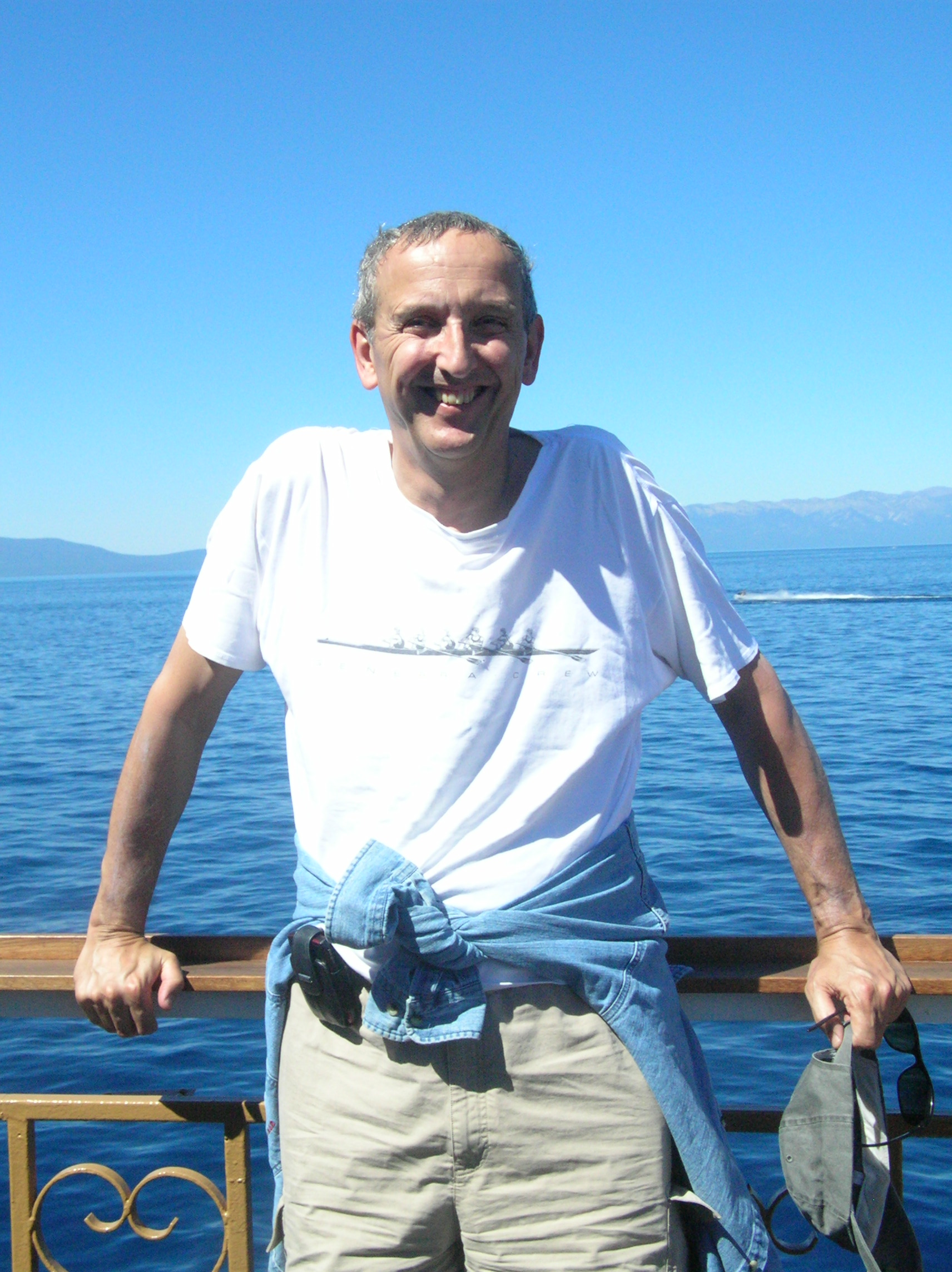
In the early 15th Century, Andrei Rublev, a Russian artist and icon writer (icons are “written,” not painted) wrote a famous icon known as the “Trinity Icon” or the “Hospitality Icon.” (You can find out more about this icon on the internet under (Rublev Icon.)
The story of Trinity Cathedral’s copy is a bit complex but stay with me as I relate its twists and turns. Lisa Mondori, a friend of Dean Brown, visited with the Dean upon her 2001 return from Peace Corps work. Lisa had contacts in Romania through her work in the Peace Corp and with World Vision. In Lisa words, she “foolishly promised Don” a copy of the icon. The Dean did not let Lisa forget her promise and, during a visit in 2002, he brought out “an enormous bunch of taped-together paper indicating the size he wanted.” Don wanted the icon to reside on the wall in the East Transept. The space Don envisioned for the icon meant that Trinity could have a copy that would be almost identical in proportions and size to the real Rublev Trinity.
Lisa contacted Father Mihai Pavel, a friend of hers from her days in the Peace Corp. He facilitated the project. Father Pavel contacted Razvan Gasca, a student of sacred art at the Alexandru Ioan Cuza in Iasi, Romania. (Razvan Gasca has since become a priest in the Romanian Orthodox Church.)
Lisa continues the story: “Writing the icon] was a fairly ambitious project. Razvan had two roommates who helped, and I think the whole project took place in their tiny dorm room, crammed in between the bunkbeds. Mihai ordered the board from some monastery up in the hills that is known for its icon boards, went to collect it, and discovered that it wouldn’t fit into the car. I brought brushes, pigments, and the gold leaf from the U.S., good quality art supplies still being hard to come by in Romania at that time. When the icon was finally finished, Mihai had a hard time giving it up. He put it against the wall in his office at World Vision and proceeded to procrastinate until Don wrote him a somewhat forceful email announcing the date when he planned to install the icon in the Cathedral and more or less ordering Mihai to get a move on.”
The icon was installed in June 2003 in the space that Dean Brown envisioned. Since then smaller copies have been given as departure gifts to numerous staff and clergy whose careers have taken them away from Trinity Cathedral.
Now the icon has disappeared from the Cathedral. Mary and I disked it away. Some of the gold leaf has bubbled and flaked off. Kathrin Burleson, another Trinity Cathedral friend, interested in icons, assured me that the faulty gold leaf does not extend to the icon images and is repairable. Kathrin referred me to Father Damian Higgins, Abbot of Holy Transfiguration Monastery in the Redwood Valley. Father Damian writes and repairs icons. He agreed to look at our copy of Rublev’s icon and see about repairs. (Getting the icon repaired was on my “to do” list for three years, and now, with much more time on my hands, I was able to pursue this goal.)
Mary and I took the icon to the monastery on December 9, a beautiful, late fall day with plenty of sunshine. We traveled north along I-80 and then took Highway 20 west. The journey took us along the north shore of Clear Lake until we went north on Highway 101 for a couple of miles before exiting onto West Road. West Road was as scenic as many country roads. It reminded me of Williams Highway, one of the roads from Grants Pass to my family’s farm in Southern Oregon We went past numerous farms and orchards before turning veering right onto Tomki Road, also a country road but narrower than West Road. About 5 miles along Tomki we came to a sign that read, “This road is not maintained during the winter months. Continue at our own risk.” Tomki Road went from a two lane to a one lane with the valley on the left and a hill on the right. Waze continued to indicate that we were on the right path.
We passed a Buddhist monastery that earlier research, the map and Waze told us was there and suddenly we saw the entrance to the monastery grounds. We had made it!
I will continue with our stay at the monastery in the next blog.

